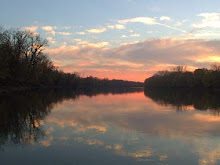Government Issues
January 21, 2010
INSIDE WASHINGTON: SECRET BILL-WRITING ON THE RISE
The civics books say the House and Senate produce a final bill by sitting around a table where the public can watch them work out their differences. It's a quaint idea, but a different modern reality has been on display this month. Democrats are refusing to open to the public the end-stage negotiations on how the government is going to change the delivery of health care. And it's not just on the high-profile health care bill; the trend on much legislation is to shut the door and keep the minority party, cable TV and other media on the outside, says Townhall.com.
For examples:
Dating back to 1789, the House and Senate have dealt with differences in bills by convening conference committees to thrash out a unified approach that the chambers can pass and send to the president.
For the past two decades at least some of these bicameral, bipartisan meetings have been open to C-SPAN cameras.
But in those same two decades, leaders from both parties have held fewer and fewer conference meetings, or reduced their significance to photo ops.
Conferees did meet briefly last February on the $787 billion economic stimulus package, but only after the White House and Democratic leaders had reached agreement on the key issues. Other major bills sent to the president last year -- a credit cardholder bill of rights, a women's fair pay bill, a smoking regulation bill and a war spending bill -- were completed without open conference meetings, says Townhall.
Senate Historian Donald Ritchie says the demise of the conference meeting has coincided with the rise of partisanship, and the health care bill is a perfect example; there's no motivation to convene a bipartisan conference when every minority member opposes it. Another factor is a shift in power from House and Senate committee chairmen to party leaders.
Rather than staging conference meetings, putting bills online for 72 hours before a final vote would better ensure public access to what Congress is doing, says John Wonderlich, policy director for Sunlight Foundation, a group that promotes government transparency.
Source: Jim Abrams, "INSIDE WASHINGTON: Secret bill-writing on the rise," Townhall.com, January 19, 2010.
For text:
















